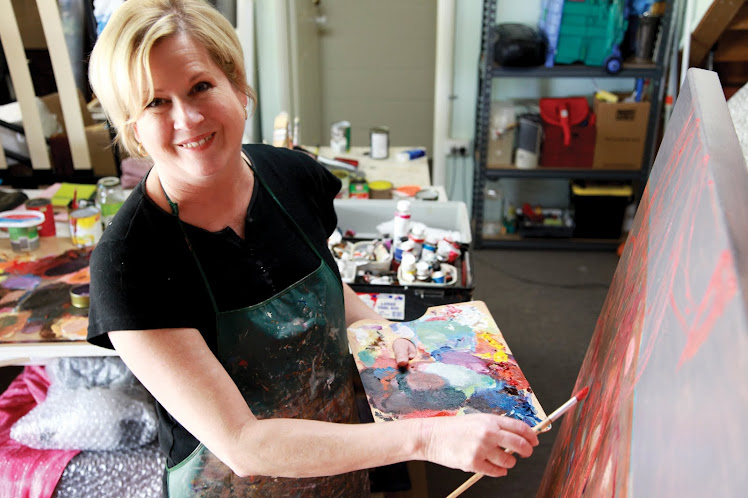1. When creating a painting (or any artwork) you want your work to have a little bit of your heart in there. When you view a painting that connects with you, draws you in inviting you to linger, identify what it is in the painting that does this for you.
2. Not all paintings will connect with the same people, but if you put a little bit of yourself in your paintings, chances are that someone out there will tune into that connection and enjoy your work.
3. Putting a little bit of your heart in there is honesty. People connect to this and see it. Painting without heart has no honesty and people see this too.
4. Artists who simply paint to a formula without any thought rationale have no honesty in their work, and people cannot find the connection that draws them in. Paintings like this have little appeal other than decorative, which loses its appeal very quickly. If there is no connection, people will just walk past it on the wall without a second glance. We are aiming to hold people in front of our work – so you must decide how you are going to do this if you want to be an artist.
5. Everything you decide to paint must have a prior motivation about why you want to paint it.
6. It is important to identify what motivates you to paint your subject. It could be the mood of colour in a landscape, the narrative you want to give a work, the way light plays on the subject eg. still life, portraiture, the character of your subject (particularly portraiture). It could be the atmosphere. You might want to make environmental statements, political statements, societal statements, use of metaphor in still life subjects, the impacts living in suburbia, etc, etc, the list goes on. Whatever you are passionate about, think how you want to say this in your work and this will set you on the right path to painting with passion and substance.
7. Use these devices in your paintings in your focal point at least.
8. When you are not painting, write notes and thoughts about what your work means to you, and put these into your visual diary.

No comments:
Post a Comment